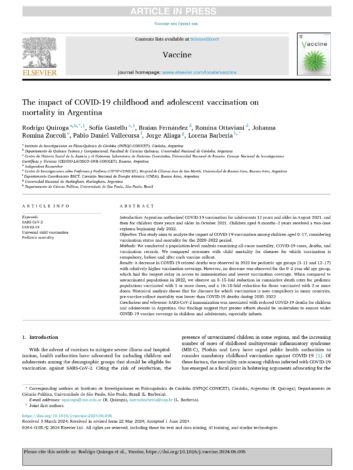Introduction
Argentina authorized COVID-19 vaccination for adolescents 12 years and older in August 2021, and then for children three years and older in October 2021. Children aged 6 months–2 years received a two-dose regimen beginning July 2022.
Objective
This study aims to analyze the impact of COVID-19 vaccination among children aged 0–17, considering vaccination status and mortality for the 2020–2022 period.
Methods
We conducted a population-level analysis examining all-cause mortality, COVID-19 cases, deaths, and vaccination records. We compared outcomes with child mortality for diseases for which vaccination is compulsory, before and after each vaccine rollout.
Results
A decrease in COVID-19-related deaths was observed in 2022 for pediatric age groups (3–11 and 12–17) with relatively higher vaccination coverage. However, no decrease was observed for the 0–2 year old age group, which had the longest delay in access to immunization and lowest vaccination coverage. When compared to unvaccinated populations in 2022, we observe an 8–15-fold reduction in cumulative death rates for pediatric populations vaccinated with 1 or more doses, and a 16–18-fold reduction for those vaccinated with 2 or more doses. Historical analysis shows that for diseases for which vaccination is now compulsory in many countries, pre-vaccine-rollout mortality was lower than COVID-19 deaths during 2020–2022.
Conclusions and relevance
SARS-CoV-2 immunization was associated with reduced COVID-19 deaths for children and adolescents in Argentina. Our findings suggest that greater efforts should be undertaken to ensure wider COVID-19 vaccine coverage in children and adolescents, especially infants.


